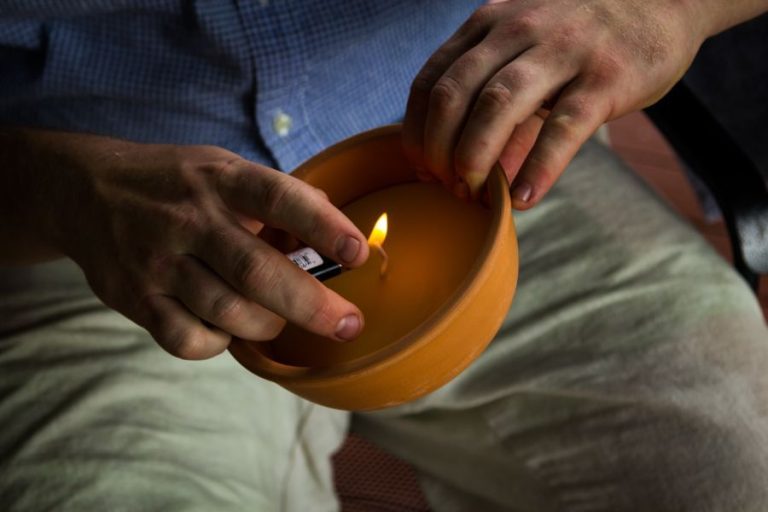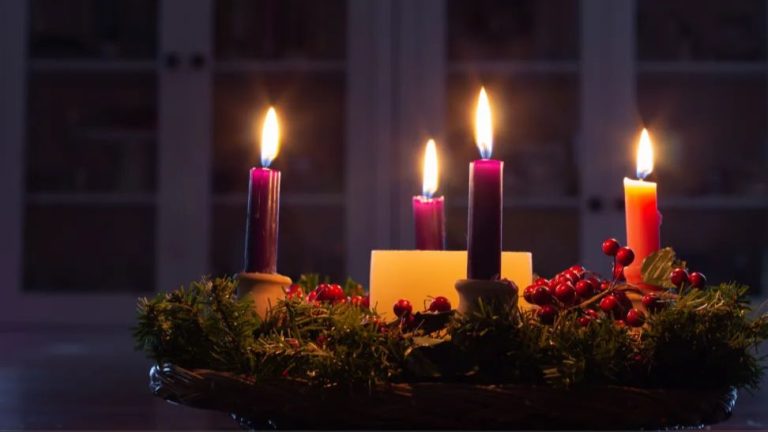What Is The Significance Of Candles At Halloween?
Introduction
The use of candles on Halloween has a long tradition that stems from the ancient celebration of Samhain. Candles were believed to ward off evil spirits and also provide a guide for the souls of loved ones. Over time, Jack-o-lanterns lit with candles have become a quintessential part of Halloween decor. While the use of candles on Halloween has evolved, they remain an iconic part of the holiday ambiance.
Origin of Jack-o-Lanterns
The tradition of carving Jack-o-Lanterns for Halloween comes from an old Irish legend about a man named Stingy Jack. According to the legend, Jack was known throughout Ireland as a deceitful drunkard who played tricks on everyone. One day, Jack tricked the Devil into climbing an apple tree and then carved the sign of the cross into the bark, trapping the Devil in the tree. Jack made a deal that if he let the Devil down, the Devil could never claim his soul. When Jack eventually died, he was turned away from heaven because of his life of drinking and deceit. He was also turned away from hell because of the deal he made with the Devil. The Devil gave him a single burning coal to light his way through the night and sent him off into the darkness. Jack put the coal inside a carved-out turnip and has been roaming the Earth ever since. The Irish began to refer to this ghostly figure as “Jack of the Lantern” and then simply “Jack O’Lantern”. To ward off Stingy Jack and other evil spirits, the Irish would carve their own jack-o-lanterns from turnips, beets, and potatoes to put outside their homes. Immigrants brought this tradition with them to America, but they began carving pumpkins instead of turnips because pumpkins were more plentiful. And so the Jack-o-Lantern was born, named after the original legendary figure.
Symbolism of Light
The use of candles and lanterns at Halloween represents light shining in the darkness. For ancient peoples, light was seen as holding power over the night and over evil spirits that might roam the earth. A lit candle or lantern provides comfort, safety, and reassurance amidst scary stories, spooky decorations, and the unknown.
In the old days, people believed that on Halloween, the boundary between our world and the spirit world became blurred. Ghosts and demons could more easily cross over and haunt the living. Light was like a shield, keeping evil at bay. The warmth and glow was a constant reminder that one was safe from harm.
In some traditions, the light was thought to act as a beacon. For lost souls wandering between worlds, the candles in the window would help guide them home or offer them sanctuary. The flickering flames served as a inviting signpost for friendly spirits.
Additionally, the candles symbolized keeping vigil through the night. People would stay up, keeping the light burning to ensure nothing malicious slipped past while everyone was asleep. The light kept watch, helping people make it unscathed to the dawn.
Warding Off Evil Spirits
The use of candles during Halloween stems from ancient folklore and superstition. Their flickering flames were thought to help ward off evil spirits and ghosts that were believed to roam freely on Halloween night.
In Irish folklore, people would carve scary faces into turnips and place them in windows with a candle inside to frighten away spirits. This was known as a “Jack-o-lantern”. When Irish immigrants came to America, they started carving pumpkins instead of turnips. The candlelit Jack-o-lanterns continued the tradition of protecting homes from evil.
People also believed that these flickering lights would help guide friendly spirits to their doorsteps. However, the evil spirits would be scared off by the sight of the carved faces and firelight. Setting candles in the windows or leaving them on porches was thought to deter ghostly visits and mischief.
This tradition endures today, with people still placing candlelit Jack-o-lanterns by their doors on Halloween night. The candles keep the superstitious spirit of the holiday alive and are a decorative way to observe this ancient ritual of warding off evil and bringing luck.
Guiding Spirits
One of the most enduring folktales around candles during Halloween involves their role in guiding friendly spirits home. Ancient Celtic traditions held that on the night of Samhain, the veil between the spirit world and the physical world was at its thinnest. During this supernatural time, spirits of loved ones could return to visit their old homes and families. To help guide these friendly spirits on their journey, Celtic people would light candles in their windows so their deceased loved ones could find their way.
The warm, flickering glow of a candle penetrating the darkness acted as a beacon for spirits to follow back home. The candlelight served as a heartwarming invitation for ancestral spirits and showed them the way on the night when supernatural forces were heightened. This ritual gave comfort to Celtic people, who felt their deceased family members and friends were near on Samhain eve. It reaffirmed the deep personal bonds that remained even beyond death.
Today, the legend of Halloween candles guiding spirits remains culturally significant. Millions of people still light candles in their windows on Halloween night, now with plastic electric lights rather than open flames. The symbolic act retains its meaning and emotional resonance. The seemingly eternal nature of candlelight continues to represent bonds beyond the physical world, love that never fades, and the comforting return of those we’ve lost, at least for one night.
Honoring the Dead
Candles have a long history of being used to honor dead loved ones during Halloween and the Day of the Dead celebrations. When lit, candles are thought to help guide the spirits of deceased family members and friends to the land of the living so they can spend time with their loved ones. The flames are also meant to provide comfort and warmth to visiting spirits. Throughout history, people have lit candles on the graves of loved ones or in windows to show spirits the way home.
In ancient Celtic traditions, candles were integral parts of Samhain festivities. The ancient Celts believed that October 31st was a liminal time when the boundary between the spirit world and the world of the living was most porous. They would leave offerings of food and drink outside their homes to appease spirits and also leave lit candles to help deceased loved ones find their way to visit. The candles served as beacons to guide the dead.
Similarly, candles play an important symbolic role in Day of the Dead rituals. Families will decorate the graves of loved ones with flowers and candles to invite the deceased’s spirit to join the celebrations. The light of the candles is thought to help souls return from the afterlife. The vigils held at gravesites often involve lighting numerous candles, which create a sacred, warm glow to honor spirits.
For many modern Halloween traditions, candles continue to be used to pay homage to deceased loved ones. Lighting candles in pumpkin carvings or luminaries symbolically honors the dead from generations past. The candles’ flames keep alive the ancient practice of using fire to light the way for souls visiting our world. The warm, flickering glow provides a heartfelt reminder of those no longer with us.
Atmospheric Lighting
Candles play an important role in creating the spooky, atmospheric lighting that sets the mood for Halloween. The soft, flickering glow of candles casts shadows on walls and illuminates jack-o-lanterns, creating an ambiance of mystery and intrigue. Place candles throughout a room or along a porch and their warm light will make your space feel delightfully haunting.
Unlike bright, modern lights, the muted illumination of candles makes darkened corners seem murky and full of possibility. The dancing flames add kinetic energy and make shadows move unpredictably. This haunting, hypnotic effect helps transform any space into a spookily lit Halloween scene.
Strategically placed candles can light a path for trick-or-treaters or outline walkways and stairs for dramatic effect. Their moody, ambient glow sets the perfect stage for Halloween thrills and chills. Next time you want to create bewitching Halloween ambiance, let candles work their magic.
Traditional Decor
Candles play a central role in traditional Halloween decor. Pumpkin-scented candles are practically synonymous with the holiday. Since ancient times, candles have been used to light jack-o-lanterns and illuminate Halloween displays. Flickering candlelight sets the spooky mood and ambiance on All Hallow’s Eve. Candles are incorporated into wreaths, centerpieces, and mantel arrangements. Spiderweb candles and black cat candles adorn homes during the Halloween season.
Wax candles are commonly placed inside carved pumpkins to make jack-o-lanterns. The dancing flame casts an eerie glow through the pumpkin’s cuts and grooves. Placing a lit pumpkin near the front door goes back centuries as a way to welcome spirits and ward off evil. Votive candles also get tucked into decorative lanterns or glittering candle holders as part of indoor Halloween decorations. Their warm, flickering glow contributes to the cozy yet creepy atmosphere.
Orange and black candles are extremely popular as Halloween accents. Alternating colors and sizes creates an eye-catching display. Groupings of 3, 5, or 7 candles make common motifs. Mini votive candles can outline walkways or line windowsills. Their sparse lighting hints at unseen spirits. For outdoor decor, faux candles offer a safe alternative to real flames. But indoors, wax candles heighten the mood with their dancing flames and woodsy scent.
Modern Traditions
In modern times, candles continue to play an important role in Halloween traditions and decor. Carved pumpkins with lit candles inside, known as jack-o-lanterns, remain one of the most iconic symbols of Halloween. These are commonly placed on porches and windowsills to welcome trick-or-treaters. Additionally, candles are often used to create an atmospheric, spooky ambiance both indoors and outdoors on Halloween night. Flickering candlelight casts dramatic shadows and highlights jack-o-lanterns, skulls, and other decorations. Both electric and real candles are used for this effect. Another modern tradition is the lighting of memorial candles or luminaries to honor deceased loved ones and invite their spirits back for the night. These candles may be placed around gravestones, along walkways, or put in paper bags weighted down by sand. The soft glow reminds us of those no longer with us and brings warmth to an otherwise dark night. Overall, candlelight continues to set the mood for Halloween celebrations and rituals even as new traditions emerge over time.
Conclusion
In conclusion, candlelight plays an integral role in many Halloween traditions and helps create the spooky atmosphere associated with the holiday. The flickering glow of candles inside jack-o-lanterns and around the home provides symbolic protection from evil spirits and pays homage to deceased loved ones. For centuries, candles have been used on Halloween to light the way for good spirits and repel mischief from the darkness. Today, candles remain a quintessential part of Halloween decorating and set the mood for festivities. Their warm, ambient light offers comfort and hope amidst the shadows of night. Though electric lights are now commonplace, the enduring presence of candles on Halloween links today’s celebrations to generations past, when firelight warded off the sinister unknown. The atmospheric lighting created by candles continues to capture the spirit of this haunting holiday.


